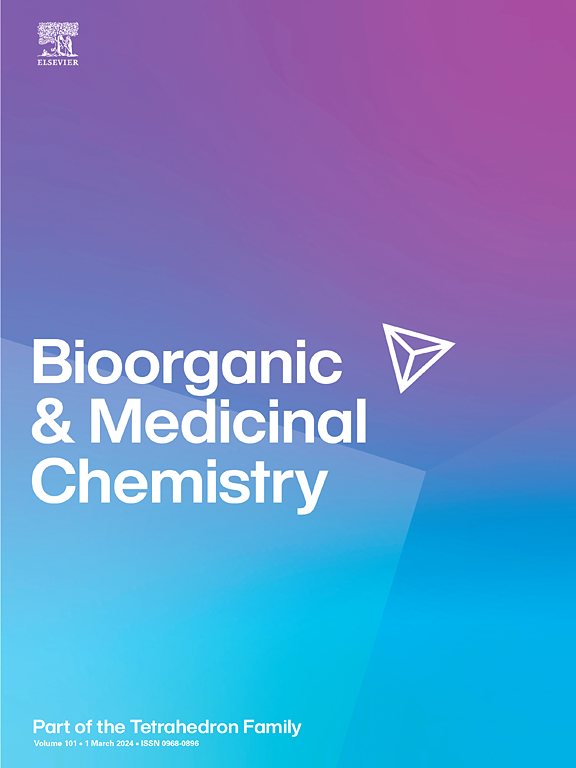A peptide-based fluorescent bioprobe for EphA2-overexpressing tumor targeting and image-guided surgical resection
IF 3.3
3区 医学
Q2 BIOCHEMISTRY & MOLECULAR BIOLOGY
引用次数: 0
Abstract
Fluorescence-guided surgery (FGS) is an emerging and highly promising surgical technique in clinic. Owing to its real-time and visual characteristics, it assists in achieving clear pictures on lesion site, tumor boundary and degree of metastasis, which will definitely improve surgery accuracy and minimize cancer recurrence as much as possible. Herein, we report a near-infrared fluorescent bioprobe, YK80, which utilizes a modified heptamethine cyanine dye as the fluorophore and a self-assembling peptide targeting Ephrin receptor A2 (EphA2) proteins as the ligand. The design strategy and the synthetic route to YK80 are described, and then optical properties, pharmacokinetics, binding affinity between YK80 and the protein are further investigated. YK80 shows high affinity (KD ≈ 100 nM) with EphA2-expressing cancer cells and excellent targeting ability in mouse models bearing colorectal tumors. Meanwhile, indocyanine green (ICG), the commonly used non-targeted fluorescent contrast agent is employed as the comparison for in vivo experiments. However, ICG owns no such capability towards cancer cells or solid tumors. Thus, YK80 could potentially serve as a targeted contrast agent for image-guided surgery and this successful example will boost the development of medical imaging, surgical methods as well as translational medicine.

求助全文
约1分钟内获得全文
求助全文
来源期刊

Bioorganic & Medicinal Chemistry
医学-生化与分子生物学
CiteScore
6.80
自引率
2.90%
发文量
413
审稿时长
17 days
期刊介绍:
Bioorganic & Medicinal Chemistry provides an international forum for the publication of full original research papers and critical reviews on molecular interactions in key biological targets such as receptors, channels, enzymes, nucleotides, lipids and saccharides.
The aim of the journal is to promote a better understanding at the molecular level of life processes, and living organisms, as well as the interaction of these with chemical agents. A special feature will be that colour illustrations will be reproduced at no charge to the author, provided that the Editor agrees that colour is essential to the information content of the illustration in question.
 求助内容:
求助内容: 应助结果提醒方式:
应助结果提醒方式:


